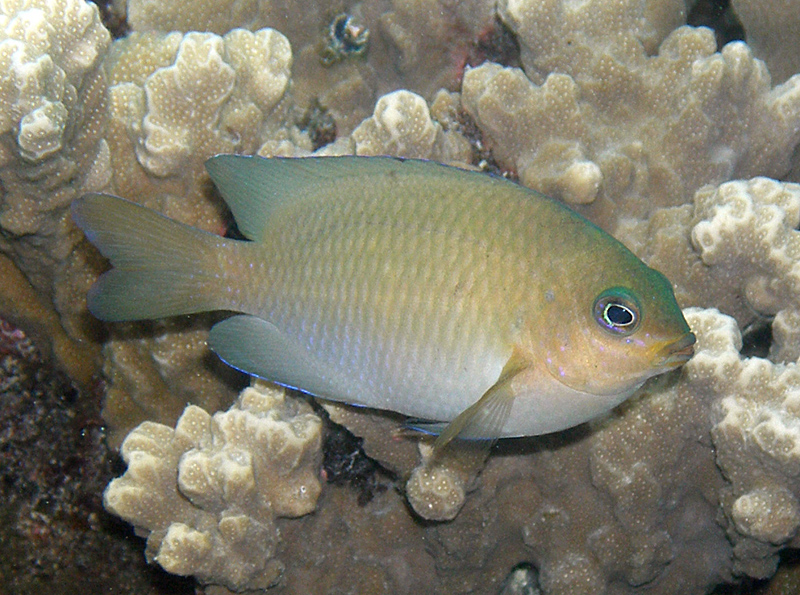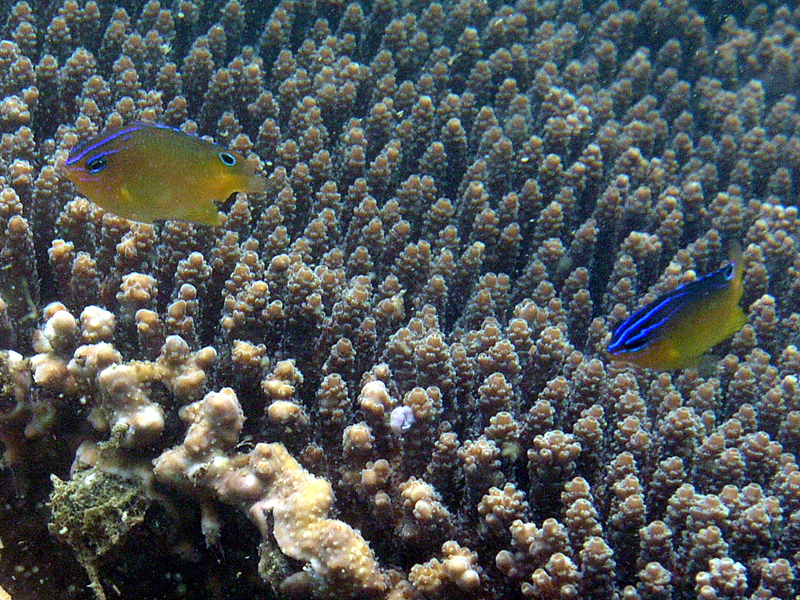Colours
Distinguishing features
A small herbivorous damselfish with a dark brown body. There appear to be two colour morphs in this species - the typical dark form found throughout the midshelf reefs of the GBR, and a paler form which is more common on the inshore fringing reefs. Both can be seen at Lizard Island, but the pale form is quite rare. The small juveniles of the dark form have dark upperparts, a yellow belly, an ocellus on the rear of the dorsal fin, and a series of electric blue lines on the forehead. The pale form juveniles differ in that they lack the dark forehead, the yellow is tinged with orange, the blue lines are less prominant. In both colour morphs the juvenile characteristics are lost with age, and the adult fish greater than 1 year old appear a uniform drab brown.
Size
- Up to 11 cm (Standard length)
Depth range
- Depth range data is not yet available.
Synonyms
Distribution
Distribution and habitat preferences
Reefs and reef flats with a mixture of hard coral cover and dead corals covered in turf algae.
Found in most locations around the Island.
Behaviour
Ward's Damsel is a dominant component of the herbivorous fish fauna at Lizard Island, feeding on turf algae from a small defended territory. They like to farm algae on hard substrata, so are most common near areas of coral rubble offering some shelter. The two colour morphs have not been scientifically documented, but preliminary genetic analysis indicates they are the same species. At inshore reefs like Magnetic Island (8-15km offshore), the pale form and the dark form are found in roughly equal numbers. At Orpheus Island (25km offshore) the dark form is approximately twice as common as the pale, and at Walker Reef on the midshelf (60km offshore) the pale form is seen only as a rare vagrant. The small juveniles feed on plankton initially, but then soon stake out a territory of their own and start to feed on benthic algae.
Web resources
References
- Booth, D.J. and G.A. Beretta (2002). Changes in a fish assemblage after a coral bleaching event, Marine Ecology Progress Series, 245: 205-212. LIRS catalog number 90108.
- Ceccarelli, D.M. (2007). Modification of benthic communities by territorial damselfish: a multi-species comparison, Coral Reefs, 26: 853-866. LIRS catalog number 90110.
- Ceccarelli, D.M., T.P. Hughes and L.J. McCook (2006). Impacts of simulated overfishing on the territoriality of coral reef damselfish, Marine Ecology Progress Series, 309: 255-262. LIRS catalog number 90111.
- View all references






